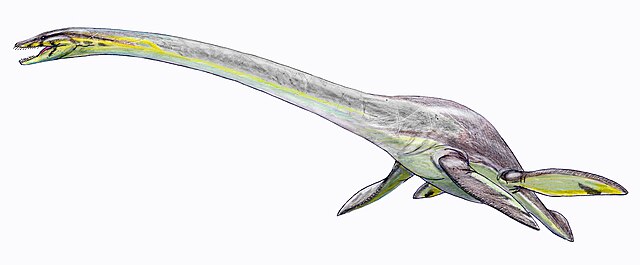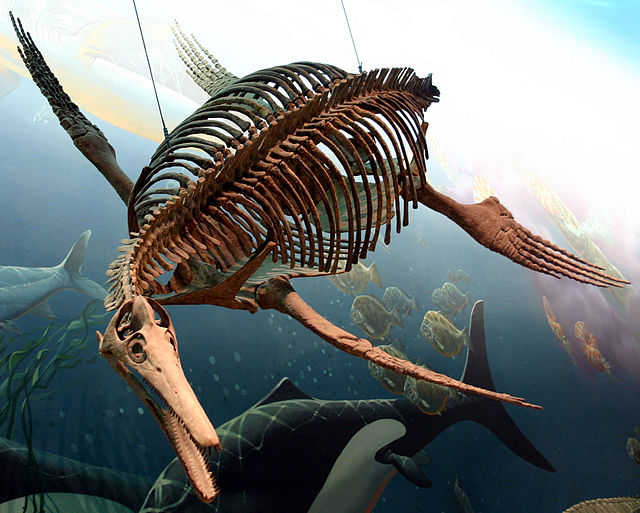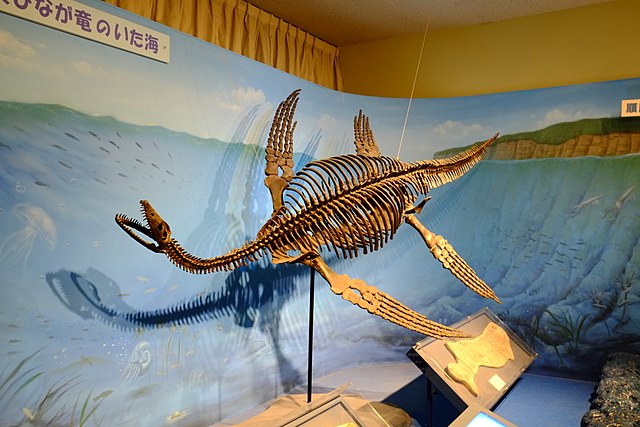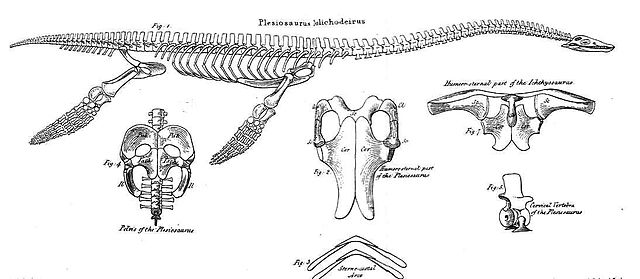Plesiosauroidea is an extinct clade of carnivorous marine reptiles. They have the snake-like longest neck to body ratio of any reptile. Plesiosauroids are known from the Jurassic and Cretaceous periods. After their discovery, some plesiosauroids were said to have resembled "a snake threaded through the shell of a turtle", although they had no shell.
Plesiosauroidea
Autograph letter concerning the discovery of Plesiosaurus dolichodeirus (NHMUK OR 22656), from Mary Anning.
Dolichorhynchops, a short-necked, long-jawed plesiosauroid, National Museum of Natural History, Washington D.C., USA.
Restoration of a Plesiosaurus dolichodeirus pair, one catching a fish.
Plesiosaurus is a genus of extinct, large marine sauropterygian reptile that lived during the Early Jurassic. It is known by nearly complete skeletons from the Lias of England. It is distinguishable by its small head, long and slender neck, broad turtle-like body, a short tail, and two pairs of large, elongated paddles. It lends its name to the order Plesiosauria, of which it is an early, but fairly typical member. It contains only one species, the type, Plesiosaurus dolichodeirus. Other species once assigned to this genus, including P. brachypterygius, P. guilielmiimperatoris, and P. tournemirensis have been reassigned to new genera, such as Hydrorion, Seeleyosaurus and Occitanosaurus.
Plesiosaurus
Illustration of the skeletal anatomy of a Plesiosaurus dolichodeirus from Conybeare's 1824 paper that described an almost complete plesiosaur skeleton found by Mary Anning in 1823
Specimen referred to Plesiosaurus dolichodeirus (NHMUK OR 36183)
Historically important sculpture (left) in Crystal Palace Park








